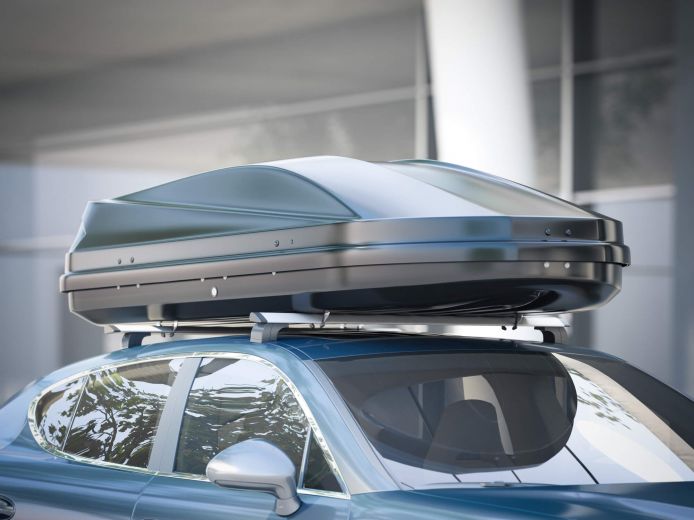Your car roof can be used to take extra luggage, bikes, sports equipment – and even somewhere to sleep – but making sure your vehicle is suitable is important before you set off.
This guide looks into what you should do when using a roof rack, the weight limits, and any safety precautions drivers will need to carry out.
What can you carry on your car roof?
Before you start your next road trip, it is vital that drivers know what they can legally carry on top of their vehicle.
In the UK, there are several common items you can carry on your car roof to use to store items.
Roof racks are designed to carry various items that are strapped into the beams across the top of the vehicle. This can include luggage, camping gear, and sports equipment.
Often seen attached to a rack is a roof box. This is an enclosed storage space to keep items more secure and protected from the weather.
When it comes to sports equipment, there are specialist attachments you can purchase for bicycles, surfboards, kayaks, paddleboards, canoes, ski, and snowboard equipment.
However, it's important to keep in mind to ensure the safety of you and your passengers.
Impact of carrying items on your car roof
All drivers should know the difference between static and dynamic roof loads. This will be explained in your owner’s manual and in the instructions for your roof bars/box. And no matter what you are attaching to the rood, make sure it is properly secured to prevent them from shifting or flying off the back of the vehicle while driving.
This is also where checking the total height of the vehicle is important. This could stop you from entering car parks or low-clearance areas.
Another key safety tip is to ensure whatever you add to your vehicle doesn’t impact visibility and aerodynamics to a point where it can be dangerous. Reduce your speed when driving to be extra safe when behind the wheel.
What is a static roof load?
All drivers should know the difference between static and dynamic roof loads. This will be explained in your owner’s manual and in the instructions for your roof bars/box. And no matter what you are attaching to the rood, make sure it is properly secured to prevent them from shifting or flying off the back of the vehicle while driving.
This is also where checking the total height of the vehicle is important. This could stop you from entering car parks or low-clearance areas.
Another key safety tip is to ensure whatever you add to your vehicle doesn’t impact visibility and aerodynamics to a point where it can be dangerous. Reduce your speed when driving to be extra safe when behind the wheel.
What is a static roof load?
A static roof load refers to the maximum weight that a vehicle's roof can safely support when the vehicle is stationary.
The weight limit is explained in the car manual or on the vehicle manufacturer’s website.
In summary, the static roof load is determined by structural integrity of the vehicle's roof design and strength of the materials.
What is a dynamic roof load?
A dynamic roof load refers to the additional weight or force that acts on a vehicle's roof during motion or while driving.
When you are driving with a roof load, wind resistance, and the movement of any items on your roof can become heavier or lighter at any given moment – meaning that at some points your roof load can drastically impact the handling and safety of the vehicle.
These forces can increase the overall load on the roof beyond its static weight limit. The faster the vehicle moves, the greater the dynamic roof load due to wind resistance.
Always adhere to the manufacturer's guidelines and avoid exceeding the recommended weight limits for the roof and the vehicle overall.
Do the limits include the bars and parts that make up the rack?
No matter if you have are looking at the static or dynamic roof load, there is a key piece of advice for all drivers who are looking to utilise their roof space.
All weight limits include the bars, attachments and materials used to make the bars and boxes. Understand your total weight for everything before you set off on your next journey.
If you have any questions about roof loads, leave them in the comment below.

RAC sale – up to 33% off*
• Roadside cover from £5.29 a month†
• We get to most breakdowns in 60 mins or less
• Our patrols fix 4/5 breakdowns on the spot











